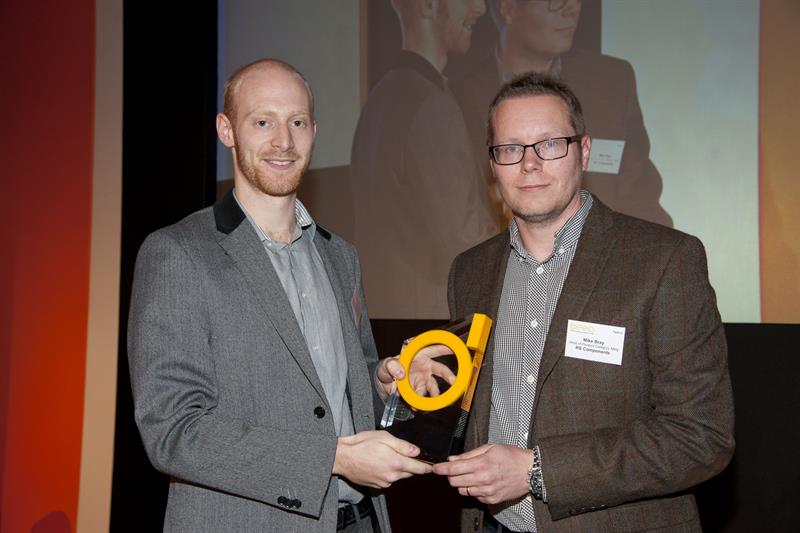The BEEAs has been highlighting the breadth and depth of the UK’s design engineering community and how it is competing on a global stage for the last 10 years. Winners of the Grand Prix, the best-of-the-best of each year, have ranged from individual engineers doing outstanding work both in their industries and communities, to small companies with staff numbers in the single-digits, to larger OEMs.
Each year, hundreds of entries are debated and analysed by a judging panel of industry experts, which includes the winners of the previous year’s Grand Prix and Design Engineer of the Year Awards.
National Instruments has been a sponsor of the event since 2009. Richard Roberts, senior customer marketing manager, says: “The BEEAs always recognises a broad-range of innovative UK engineering firms, which align with the strong engineering and innovative heritage of the National Instruments brand. It also offers the opportunity to network with many eminent engineers and business leaders. National Instruments has sponsored the Young Design Engineer award to help celebrate British engineering accomplishments and support the industry’s most precious, valuable resource – the engineers of the future.”
In retrospect
The sixth British Engineering Excellence Awards ceremony took place at a gala luncheon on 9 October 2014 at 8 Northumberland Avenue in Central London. The winners are listed below.
2014 winners
Grand prix Consultancy of the year Small company of the year Start up of the year Design team of the year Green product of the year | Materials innovation of the year Sponsored by: engineering materials Winner:Nylacast Electronic product of the year Sponsored by: Digi-Key Winner: CSR, CSRMesh
Young design engineer of the year Design engineer of the year |
Where are they now?
Mechanical products come in all shapes and sizes, but IHC’s Hi-Traq subsea crawler vehicle is big. As were the design challenges.
Hi-Traq provides the ability to ensure safe burial of interarray cables for the offshore renewables industry using an innovative self-levelling system controlling four, independently driven track undercarriages.
Using a four-track system offers improved traction on the seabed in shallow water. The environment found at offshore renewable locations required a manoeuvrable system, which mandated a chassis from which a variety of subsea tasks can be conducted. Hi-Traq is scalable, providing the opportunity to address applications ranging from interarray trenching to heavy oil and gas subsea decommissioning.
The independent steering system supports crab, skid and wagon steering. This, in turn, enables the small radius trenching required for trenching inter array cables as they leave a turbine.
Having analysed available trenching technologies, IHC decided a dedicated subsea crawler would be the best solution for interarray cable burial. A four-track crawler system would provide better manoeuvrability than two track, skidsteer vehicles, while its patent pending levelling system enables vertical trenches to be cut whilst the device is trenching on slopes of up to 20°.
The non-parallel wishbone levelling geometry for the vehicle was designed to keep the virtual pivot point at the ground-to-cutter interface, which enables the vehicle to cut a constant depth trench on side slopes. The vehicle also has a patented tilting function allowing it to trench around a radius, and to avoid undercutting the outside trench wall.

For the Young Engineer of the Year Award winner, Joel Gibbard’s final year project for his Honours Degree in Robotics at the University of Plymouth, he designed a low-cost prosthetic hand, something which his professors said would not be achievable in two university semesters. But, he proved them wrong, creating a fully-functional prototype that has won three awards.
Gibbard, the man behind the Open Hand Project, created Dextrus; a prosthetic intended to replicate much of the functionality of the human hand. With electric motors instead of muscles, steel cables instead of tendons and a rubber coating for skin, the hand integrates 3D printed plastic parts that work like bones.
Gibbard created Dextrus as an open source project; all the information needed to create one was posted on the Open Hand Project’s website. Not only did this make the hand more widely available, it also allowed the design to be improved.
In 2014, still in his early 20s, Gibbard co-founded Open Bionics with Samantha Payne The aim of Open Bionics is to pioneer a new bionic age inspired by science fiction. To date, Open Bionics has fostered a community of ‘Bionic Heroes’ of all ages whose Hero Arm designs are based on films from Frozen to Alita: Battle Angel. The arm designs are still open source and recently, the Georgia Institute of Technology has evolved Open Bionics’ designs to create ultrasound-powered bionic arms capable of playing the piano
We will be covering the 2015 Awards in the July issue of Eureka!. Entries for the ‘10th anniversary’ awards are now open, so why not visit www.beeas.co.uk to pick up some top tips on entering your submissions.











